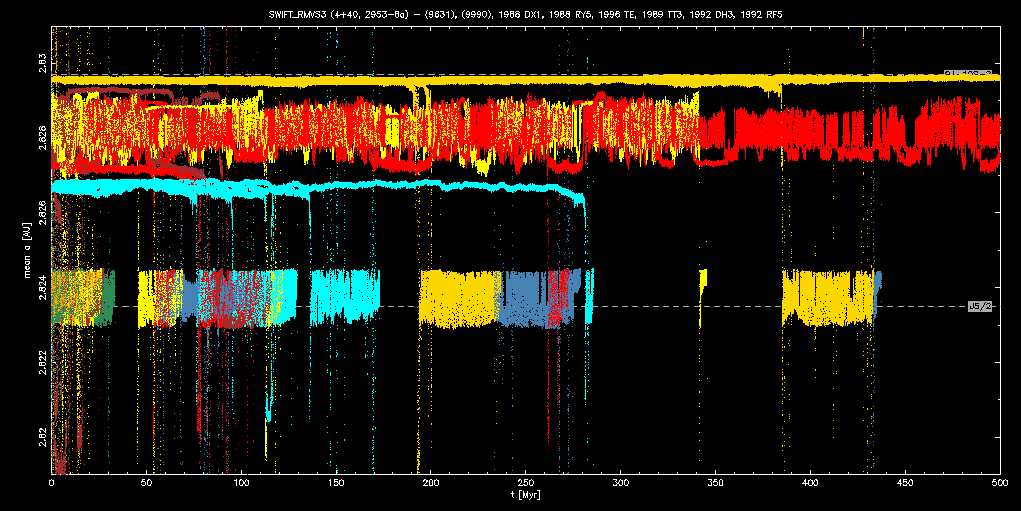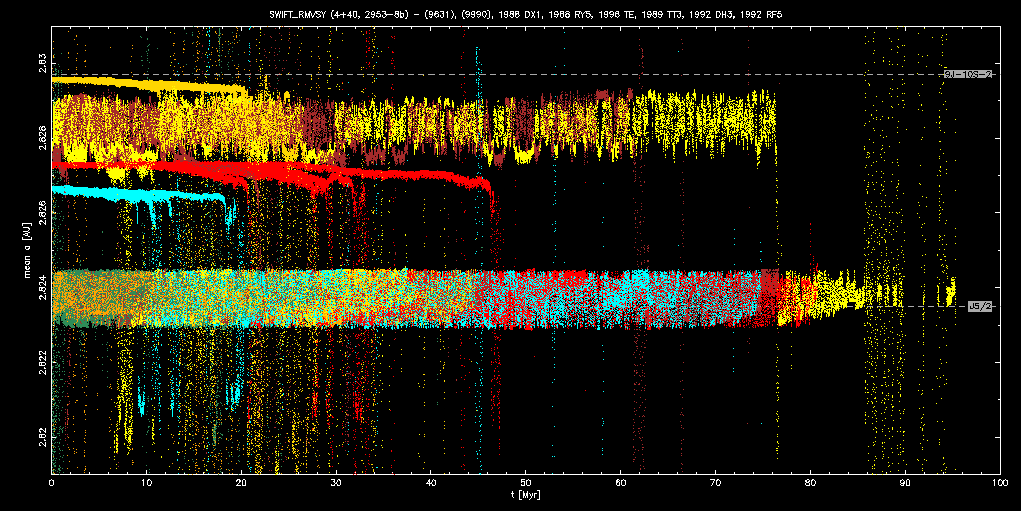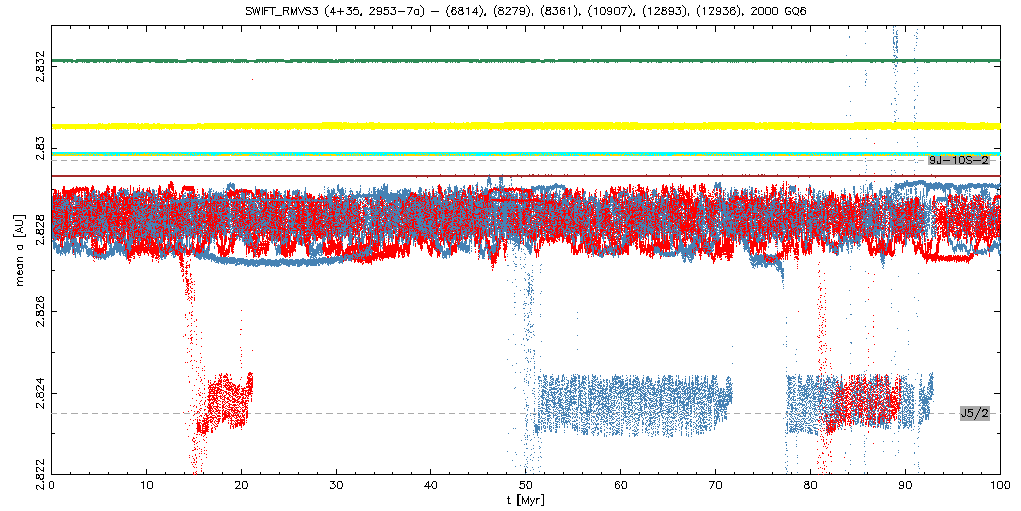- (9631) - the first fall of a clone into the 5:2 after 50 Myr
- (9990) - stays ABOVE the "chaotic zone" for more than 200 Myr
- 1988 DX1, 1989 TT3 - initially inside the 5:2 resonance
- 1988 RY5, 1996 TE - initially in the chaotic zone, median lifetime \approx 101 Myr
- 1992 DH3 - mean elements below the resonance
- 1992 RF5 - stays for 100 Myr BELOW the chaotic zone and above the 5:2 resonance
- images of individual particles, detail of first 67 Myr (a(t) graph)










